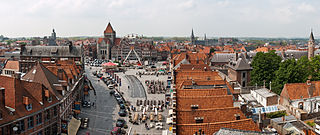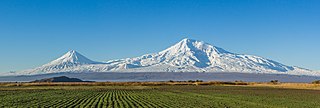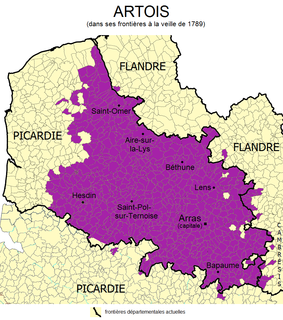
Flanders is the Dutch-speaking northern portion of Belgium and one of the communities, regions and language areas of Belgium. However, there are several overlapping definitions, including ones related to culture, language, politics and history, and sometimes involving neighbouring countries. The demonym associated with Flanders is Fleming, while the corresponding adjective is Flemish. The official capital of Flanders is Brussels, although the Brussels Capital Region has an independent regional government, and the government of Flanders only oversees the community aspects of Flanders life in Brussels such as (Flemish) culture and education.

Walloons are a Romance ethnic group native to Belgium, principally its southern region of Wallonia, who speak French and Walloon. Walloons are a distinctive ethnic community within Belgium. Important historical and anthropological criteria bind Walloons to the French people.

Tournai, known in Dutch as Doornik and historically as Dornick in English, is a Walloon municipality of Belgium, 85 kilometres southwest of Brussels on the river Scheldt. In the province of Hainaut, Tournai is part of Eurometropolis Lille–Kortrijk–Tournai, which had 2,155,161 residents in 2008.
Flanders is the country of the Flemings and, since several decades ago is also a community and a region in Belgium. Geographically and historically, Flanders also covers parts of France and The Netherlands but may also refer to:

French Flanders is a part of the historical County of Flanders in present-day France where Flemings were traditionally the dominant ethnic group and where a dialect of Dutch was or still is traditionally spoken. The region lies in the modern-day region of Hauts-de-France and roughly corresponds to the arrondissements of Lille, Douai and Dunkirk on the southern border with Belgium. Together with French Hainaut and the Cambrésis, it makes up the French Department of Nord.

Flemish painting flourished from the early 15th century until the 17th century, gradually becoming distinct from the painting of the rest of the Low Countries, especially the modern Netherlands. In the early period, up to about 1520, the painting of the whole area is typically considered as a whole, as Early Netherlandish painting. This was dominated by the Flemish south, but painters from the north were also important. Dutch and Flemish Renaissance painting, of which Antwerp became the centre, covers the period up to about 1580 or later, by the end of which the north and south Netherlands had become politically separated. Flemish Baroque painting was especially important in the first half of the 17th century, dominated by Rubens.

Ledringhem is a commune in the Nord department in northern France.
Parliament of Flanders may refer to:

The flag of Flanders, called the Vlaamse Leeuw or leeuwenvlag, is the flag of the Flemish Community and Flemish Region in Belgium. The flag was officially adopted by the Cultural Council for the Dutch Cultural Community in 1973, and later, in 1985, by its successor, the Flemish Parliament. In 1990, also the coat of arms was adopted as an official symbol.

Romance Flanders or Gallicant Flanders is a historical term for the part of the County of Flanders in which Romance languages were spoken, such as varieties of Picard. Today the region straddles the border of France and Belgium.
Dwars door Vlaanderen(English: Across Flanders) is a semi-classic road bicycle race in Belgium, held annually since 1945. The race starts in Roeselare and finishes in Waregem, both in West Flanders. Since 2017 the event is included in the UCI World Tour.
The Walloon Movement traces its ancestry to 1856 when literary and folkloric movements based around the Society of Walloon language and literature began forming. Despite the formation of the Society of Walloon Literature, it was not until around 1880 that a "Walloon and French-speaking defense movement" appeared, following the linguistic laws of the 1870s. The movement asserted the existence of Wallonia and a Walloon identity while maintaining the defense of the French language.

The Fifth Battle of Ypres, also called the Advance of Flanders and the Battle of the Peaks of Flanders is an informal name used to identify a series of battles in northern France and southern Belgium from late September to October 1918.

Carbonade flamande, alternatively spelt carbonnade or à la flamande is a traditional Belgian, French Flemish, Northern Brabantian and Zeelandic Flemish sweet-sour beef and onion stew made with beer, and seasoned with thyme, bay leaves and mustard. Mushrooms or spiced bread can also be added. The term carbonade may also refer to a dish of grilled pork loin and certain beef stews cooked with red wine such as beef bourguignon in the east of France, but is more commonly associated with the Belgian dish.
Water supply and sanitation in Belgium is provided by a large variety of organizations: Most of the 581 municipalities of Belgium have delegated the responsibility for water supply and sanitation to regional or inter-municipal utilities. There are more than 62 water supply utilities, including 2 regional, 30 inter-municipal and 30 municipal utilities. Another 100 mostly small municipalities provide services directly without having a legally of financially separate entity for water supply. Water is not scarce in Belgium and water supply is generally continuous and of good quality. However, wastewater treatment has long lagged behind and Brussels only achieved full treatment of its wastewater in 2007. In 2004 the European Court of Justice ruled condemning Belgium's failure to comply with the EU wastewater directive, and the ruling has not been fully complied with so far. Wallonia satisfies 55% of the national needs in drinking water while it counts only 37% of the population. Flanders and Brussels are dependent on drinking water from Wallonia, at a level of 40% and 98% respectively.
The Fortified Sector of Flanders was the French military organization that in 1940 controlled the section of the French border with Belgium between Lille and the North Sea. The sector was part of a system of fortifications that, in other sectors, included the Maginot Line. In the case of the Flanders sector, no large fortifications of the kind typified by the Maginot Line were built in the area. Fortifications were confined to almost two hundred blockhouses built during the 1930s, and some defensive inundations in the vicinity of Dunkirk. The Fortified Sector of Flanders was bordered on the east by the Fortified Sector of Lille It was quickly overrun by German forces during the Battle of France.

Walloon Flanders was a semi-independent part of the County of Flanders, composed of the burgraviates of Lille, Douai and Orchies. It is sometimes referred to as Lille–Douai–Orchies.






















